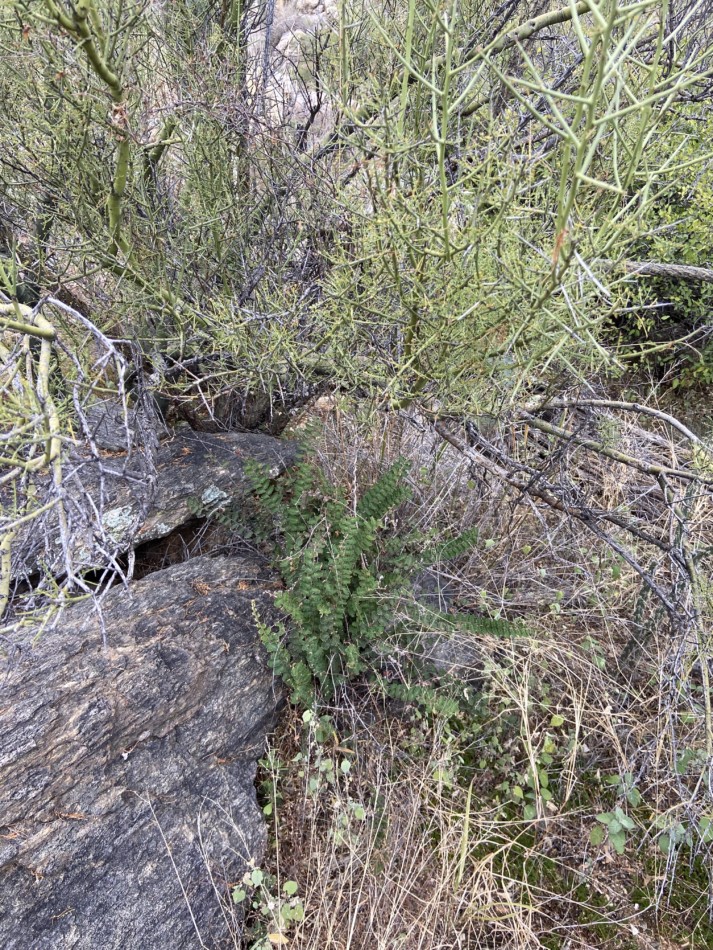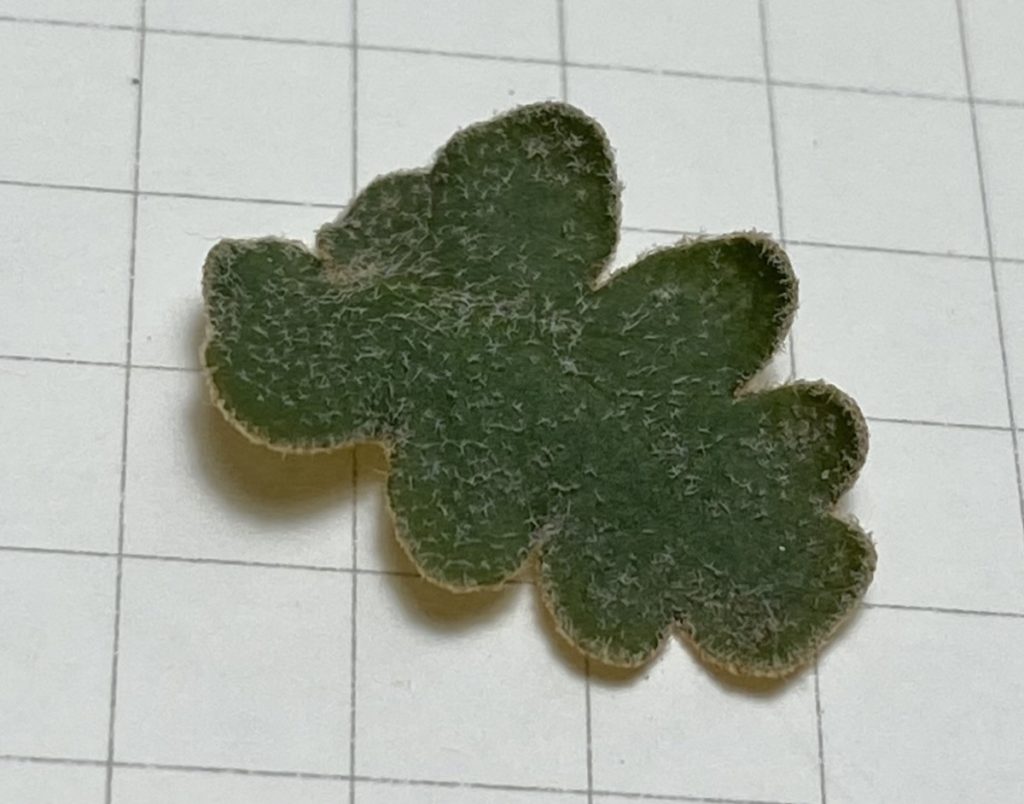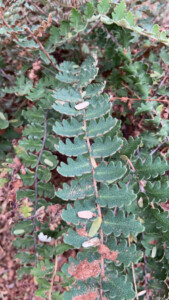When I moved to Arizona and left the coast redwood forest behind, I sadly thought my love affair with ferns was over. I was proven wonderfully wrong almost immediately during my first hikes in the Sonoran Desert and across the Sky Islands. Right away I found sweet ferns growing next to saguaro cactus in Saguaro National Park and among the pine trees on Mt. Lemmon. Ferns are an underappreciated feature of the southwestern flora and if you look closely, you can find them radiating green foliage in rocky outcrops and under the cooling shade of shrubs and trees of the region.
There are more than 10,000 species of ferns living on Earth today. While ferns are most often found in temperate and tropical climates, there are many species that are drought adapted and quite capable of living in highly dry environments. One of my local favorites is called the wavy scaly cloakfern—Astrolepis sinuata. In Greek, this name means “star scale lobbed leaf” for the star-shaped scales on the upper surface of the frond leaflets (also called pinnae) and wavy edges of the frond blade.

Can you spot the lush wavy scaly cloakfern poking out between the rocks in the shade of a palo verde? Photographed on the Redington Pass.
This fern can be found in the Sky Island region between 2,500 and 7,000 feet in a variety of dry, rocky habitats. Like all ferns, the wavy scaly cloakfern has two life stages: the large and obvious sporophyte generation that produces airborne spores on the underside of fronds to reproduce and the tiny gametophyte generation that reproduces with swimming sperm and eggs. Look in moist, shady crevices for the diminutive gametophyte ferns and keep a look out for the large sporophyte fern crowns full of fronds that can range from 4 inches long to over 50 inches!
Ferns are truly incredible plants and worth looking for on your next Sky Island hike. Learn about how ferns can be one of the first signs of forest recovery after wildlife here.
Reference: SEINet Arizona-New Mexico Chapter (link)

This leaflet, or pinna, is covered with star-shaped scales. The plant’s scientific name, Astrolepis sinuata, comes from the Greek word for star (astron) and scale (lepis). The scales are soft to the human touch and help protect the fern from being munched by insects and dehydration by trapping humid air above the leaf’s surface.


